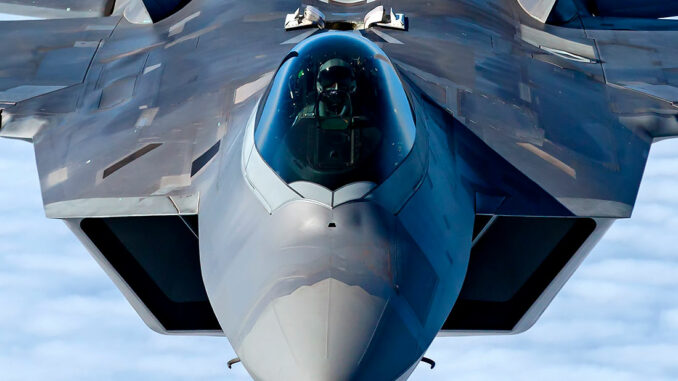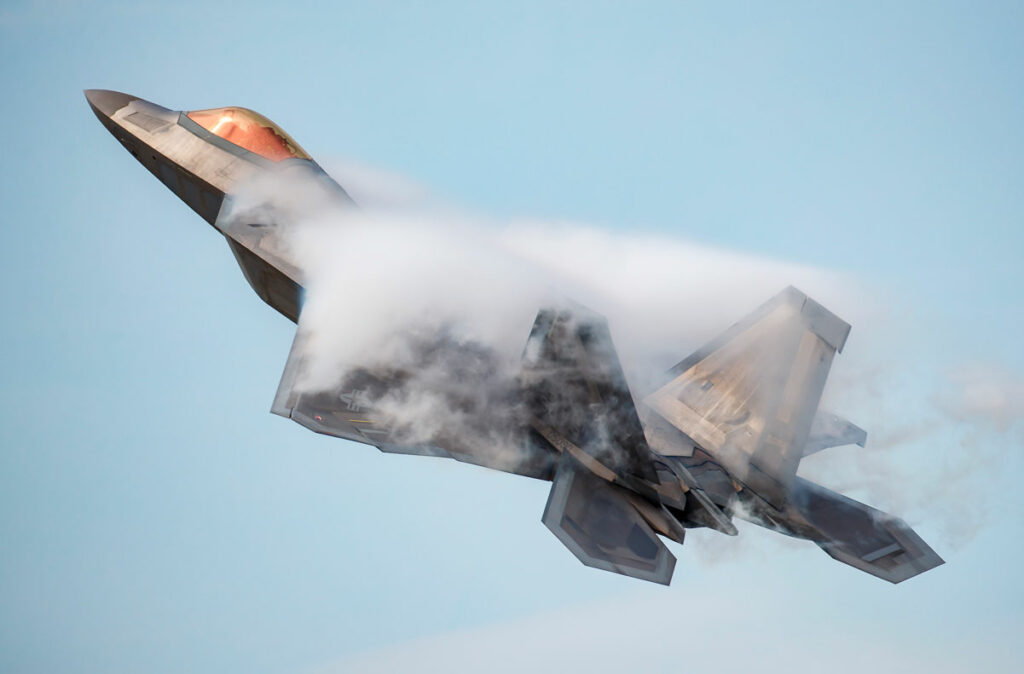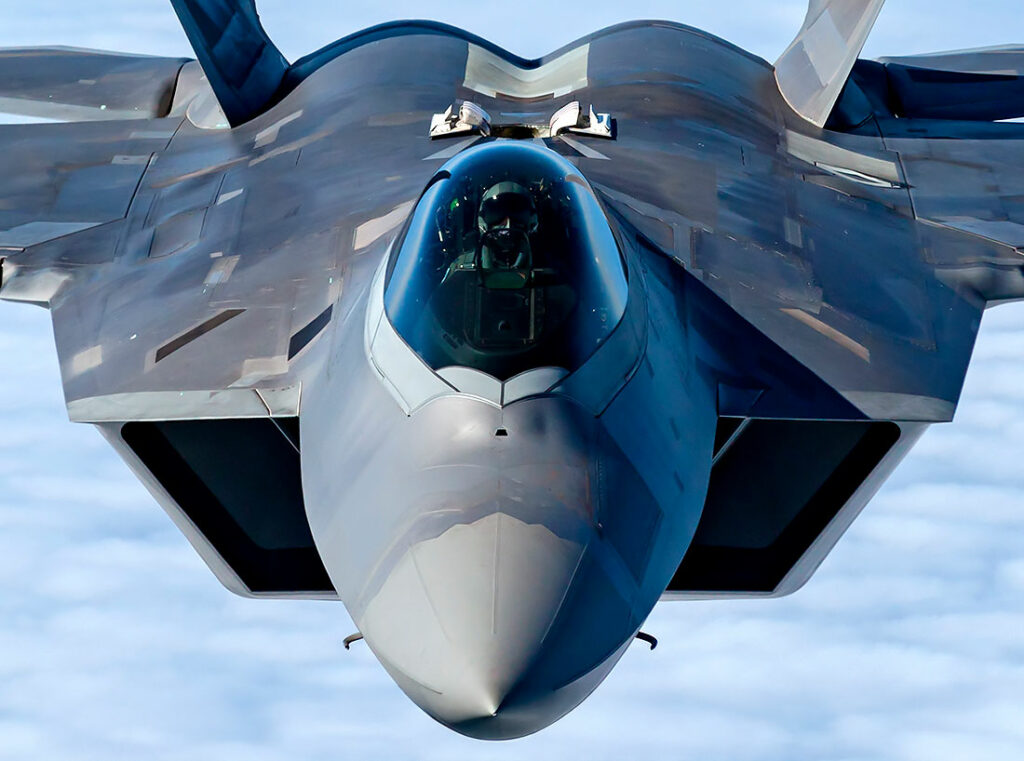
The F-22 Raptor will receive Lockheed Martin’s TacIRST system, offering passive detection of stealth targets and improved survivability.
The F-22 Raptor, the US Air Force’s flagship stealth fighter, is set to integrate a distributed infrared search and track (IRST) system developed by Lockheed Martin. This system, named Infrared Defensive System (IRDS), will enable passive detection and tracking of airborne targets, including stealth targets, while remaining immune to electronic countermeasures. This technology, already used in other platforms, enhances survivability and mission effectiveness, complementing traditional radars. Tests of this system, carried out since 2022, are preparing Raptors to take on modern adversaries such as Chinese and Russian stealth fighters.
Adding an IRST system to the F-22: a strategic necessity
The F-22, designed for air superiority, lacked an essential capability: an infrared search system (IRST). Opposing stealth aircraft, such as the Chinese J-36, exploit their low radar signature to evade traditional detectors. IRST, by detecting the heat emitted by engines or air friction, provides an effective long-range solution.
A key advantage of IRST is its ability to operate passively, without emitting detectable signals. This makes it particularly useful in environments where electronic jamming is commonplace. Complementing radars, it can guide the latter to lock onto a target with precision, increasing overall effectiveness.
The planned configuration for the F-22 includes TacIRST sensors integrated into the aircraft’s structure, avoiding the addition of external pods that could compromise its stealth. This system will also enable precise angular tracking of targets and, thanks to networked collaboration between several aircraft, triangulation of distances for high-precision engagements.

Tried and tested technology
The TacIRST system, introduced in 2022, was first tested on F-5 Advanced Tiger fighters operated by private companies such as Tactical Air Support (TacAir). These tests confirmed that the IRST could be integrated into a variety of configurations, from integrated sensors to external pods. Recent tests on the F-22 showed successful integration, although the challenge remains to fit these sensors into the limited space of the aircraft.
One notable feature is the distribution of IRDS sensors across the F-22’s structure. Unlike traditional pod-mounted systems, this approach offers panoramic coverage while maintaining stealth. Tests also explored the use of under-wing pods to extend detection capabilities. The latter, equipped with specific apertures, could be used to complement integrated sensors.
Major operational implications
The addition of the IRDS system transforms the way F-22s interact with their combat environments. Benefits include:
- Increased detection of stealth threats: Modern fighters, such as the Russian Su-57, use radar signature reduction technologies. IRST enables them to be detected via their infrared emissions.
- Immunity to electronic countermeasures: Unlike radar, IRST remains functional even in jamming-saturated environments.
- Better management of multiple targets : Fused data from IRST, radar and passive radio sensors enable faster, more accurate target identification.
With these capabilities, the F-22 better adapts to modern threats, while retaining its role as a dominant fighter. This integration also reflects an evolution towards a distributed sensor architecture, similar to the F-35’s Distributed Aperture System (DAS), but adapted to the F-22’s specific constraints.

Technical and logistical challenges
Despite its advantages, integrating the IRDS into the F-22 poses a number of challenges. The reduced size of the TacIRST sensors makes their integration possible, but space constraints in the aircraft require major adjustments. Experts believe that this installation may also require modifications to thermal management, as IR sensors generate significant heat which must be dissipated efficiently.
Moreover, the cost of this modernization remains a concern. Each F-22 already in service costs around 150 million euros, and the addition of advanced systems like IRDS could increase these costs by 5 to 10 million euros per unit. However, this investment is justified by the need to maintain technological superiority in the face of rapidly modernizing adversaries.
Responding to changing threats
The IRDS’s capabilities are not isolated. They are part of a context in which the modernization of the world’s air forces is accelerating. China, with its J-20 and its J-36 fighter project, is investing massively in stealth technologies. Similarly, Russia continues to develop advanced variants of the Su-57, incorporating systems similar to IRST.
For the US Air Force, the IRDS-equipped F-22 is becoming an essential platform in scenarios where air dominance is crucial. In future conflicts involving advanced forces, this technology could make the difference between success and failure in contested environments.
War Wings Daily is an independant magazine.